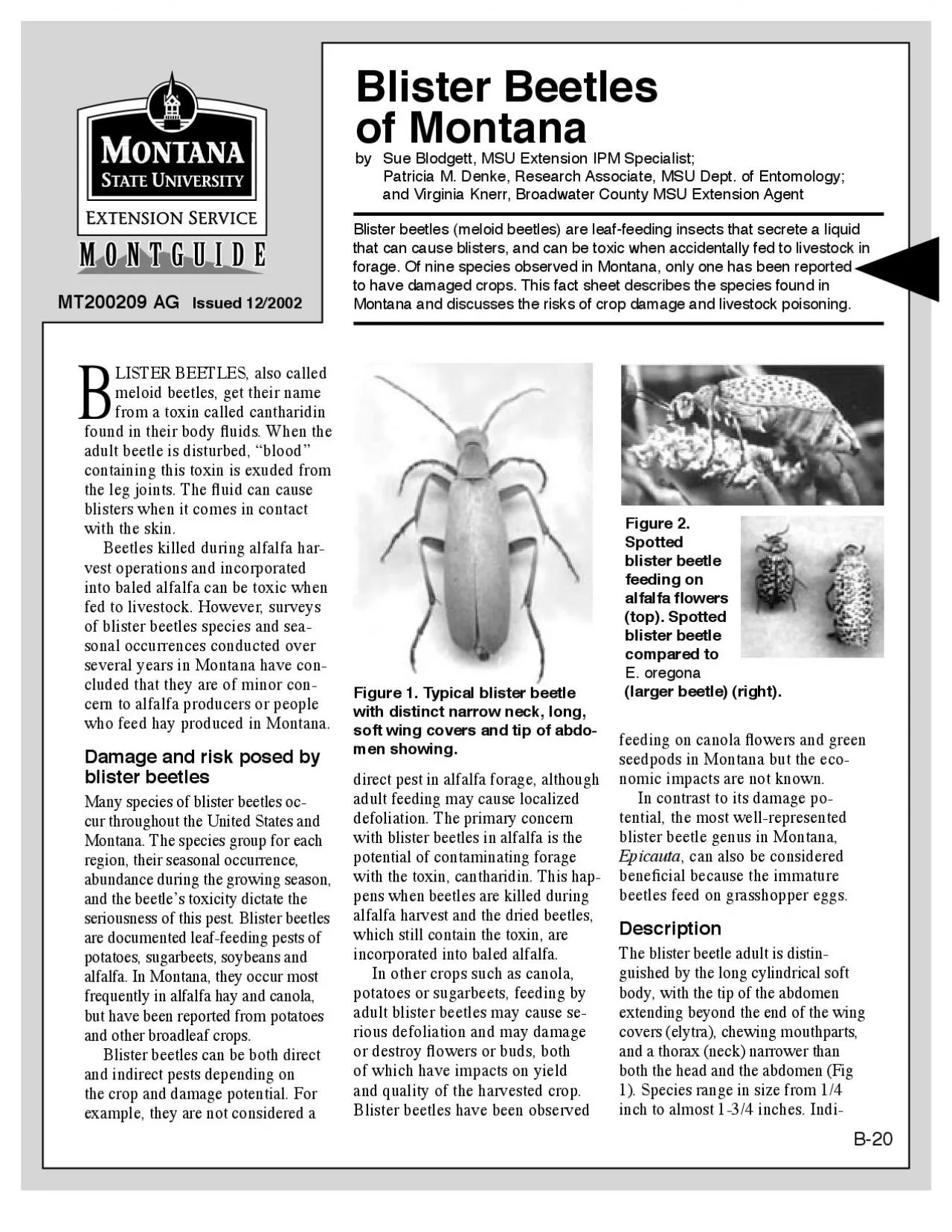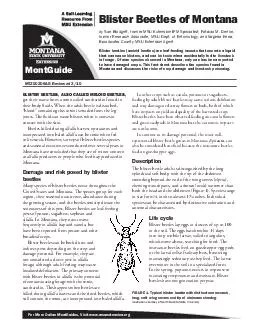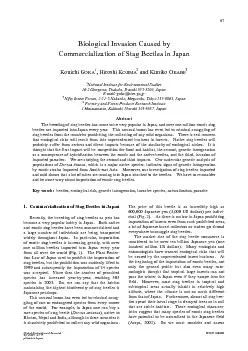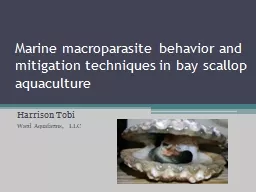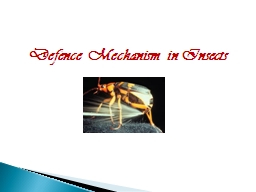PDF-Blister beetles meloid beetles are leaffeeding insects that secrete
Author : taylor | Published Date : 2022-08-16
that can cause blisters and can be toxic when accidentally fed to livestock in forage Of nine species observed in Montana only one has been reported to have damaged
Presentation Embed Code
Download Presentation
Download Presentation The PPT/PDF document "Blister beetles meloid beetles are leaff..." is the property of its rightful owner. Permission is granted to download and print the materials on this website for personal, non-commercial use only, and to display it on your personal computer provided you do not modify the materials and that you retain all copyright notices contained in the materials. By downloading content from our website, you accept the terms of this agreement.
Blister beetles meloid beetles are leaffeeding insects that secrete: Transcript
Download Rules Of Document
"Blister beetles meloid beetles are leaffeeding insects that secrete"The content belongs to its owner. You may download and print it for personal use, without modification, and keep all copyright notices. By downloading, you agree to these terms.
Related Documents

